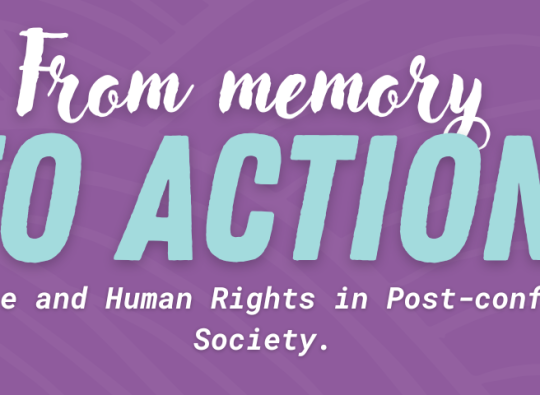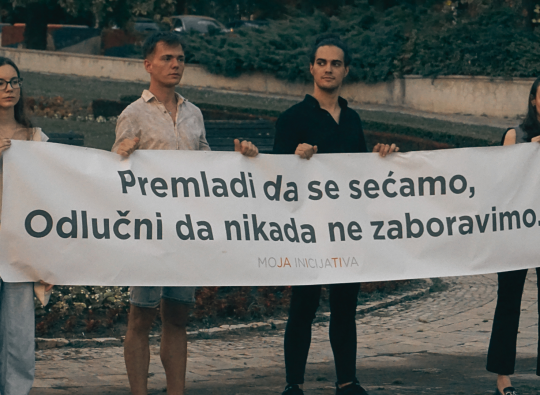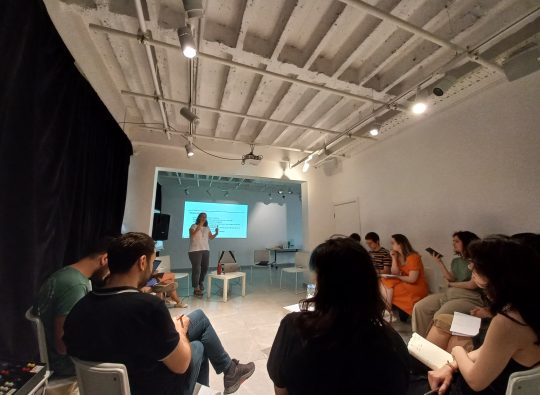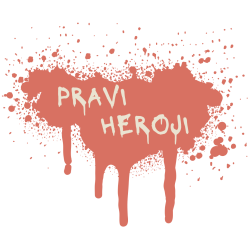According to data from the Bosnian Book of the Dead by the Research and Documentation Center (IDC), 13,952 people were killed in the Sarajevo region between 1992 and 1996, including 5,434 civilian casualties. The Association of Parents of Murdered Children in Sarajevo reports that at least 524 children were killed, while IDC data shows that 614 children were killed across ten Sarajevo municipalities, with 77 minors dying while serving as soldiers.
The installation consisted of two mirrors and a red thread stretched between them over a distance of about 700 meters. The first mirror was placed at the beginning of Čika Ljubina Street, marked with the number one, while the second, at the end of the street, displayed a target and the number 1425—the number of days the Siege of Sarajevo lasted. The concept was for visitors to look into the mirror and see themselves as the target, symbolically putting them in the position of Sarajevo’s citizens, who from April 5, 1992, to February 29, 1996, were constantly exposed to sniper attacks, artillery shelling, and airstrikes. A red thread, representing a sniper’s trajectory as well as the path citizens had to take to avoid becoming targets, stretched between the mirrors, following a zigzag pattern for 1425 steps. At the end of the path, near the mirror with the target, there was a notebook where visitors could record their thoughts.
Despite the violence and pressure, students, pupils, and teachers in blockades across Serbia have been continuously protesting for more than five months, demanding justice from the authorities. These protest marches have even extended to Strasbourg, but the question of whether every next step is a risk—for them, their families, and society—remains. On Friday, April 4, which is commemorated as Students’ Day in Serbia in honor of student Žarko Marinović, more than 100 Belgrade citizens walked with us along the red thread in Čika Ljubina Street to remember or learn about the lives lost during the war in Sarajevo, which was marked by the siege of the Yugoslav People’s Army and the Army of the Republika Srpska 33 years ago.
Military and political leaders from the Republika Srpska were convicted for crimes against humanity during the Siege of Sarajevo by the ICTY and the Mechanism: officers Stanislav Galić, Dragomir Milošević, and Ratko Mladić, as well as politician Radovan Karadžić. High-ranking officials of the Federal Republic of Yugoslavia, Momčilo Perišić and Slobodan Milošević, were also tried for crimes committed during the siege, but Perišić was acquitted, and Milošević died before the first-instance verdict was delivered. In addition, several individuals have been held accountable for crimes committed by the Army of BiH in the Sarajevo region under the control of the BiH government. Among those currently on trial in Bosnia are former high-ranking BiH officials, including Ejup Ganić, for crimes committed during the attack on a JNA column in Dobrovoljačka Street in early May 1992.
“The terror didn’t end in Sarajevo; it still continues,” wrote Svetlana Marojević, one of the passersby who viewed the installation. Composer Ivana Stefanović also visited the installation, describing it as “a heavy, shameful chapter of our lives.” “Without confronting the truth, there can be no peace,” added another visitor.
The aim of this street action was not only to inform and remind the people of Serbia about the Siege of Sarajevo but also to foster empathy for those who lived through or perished during the siege and the entire war in the city. It sought to momentarily put visitors in the position of Sarajevo’s citizens, offering them a glimpse into their experience.












